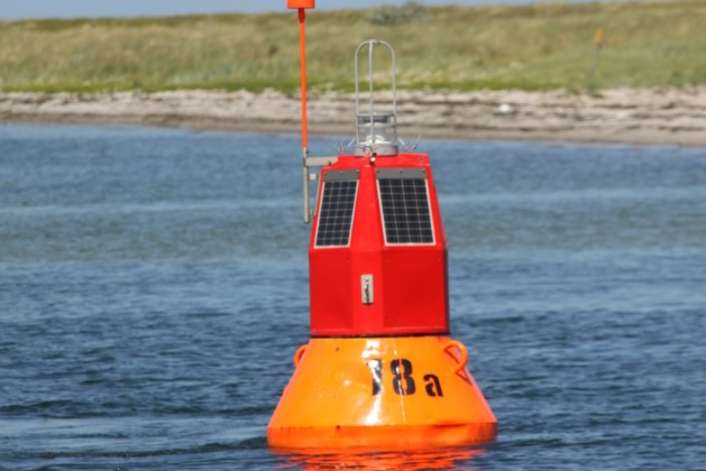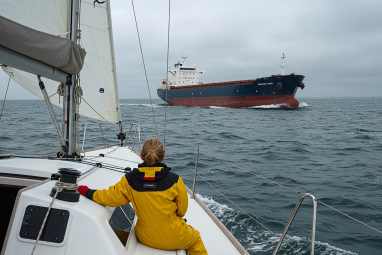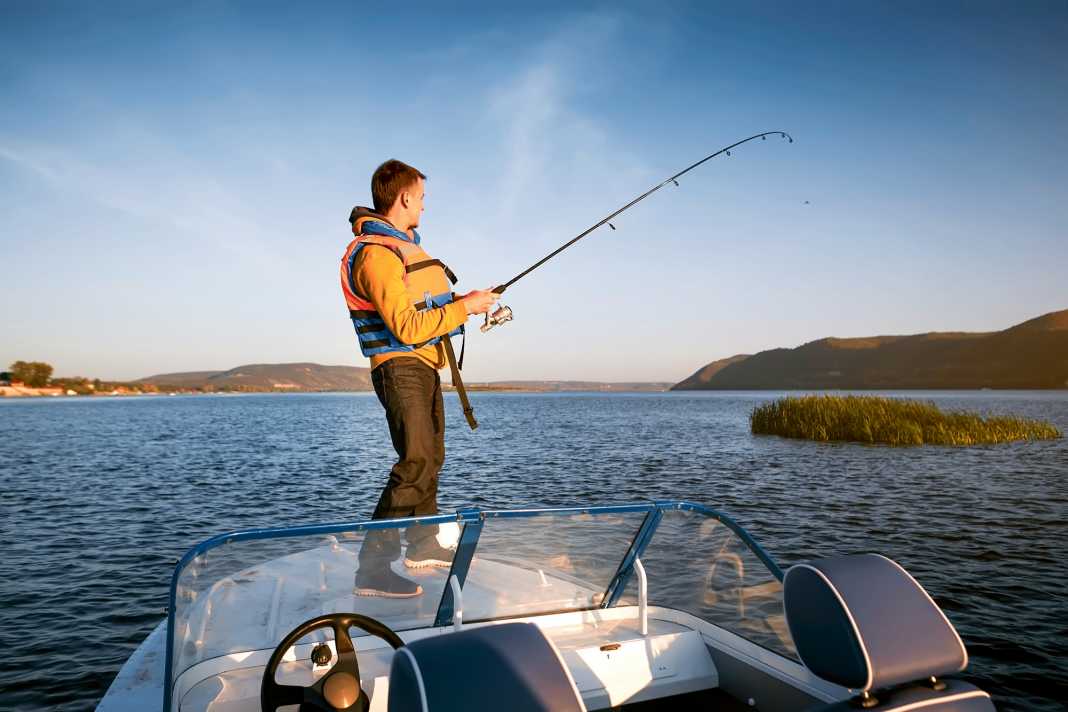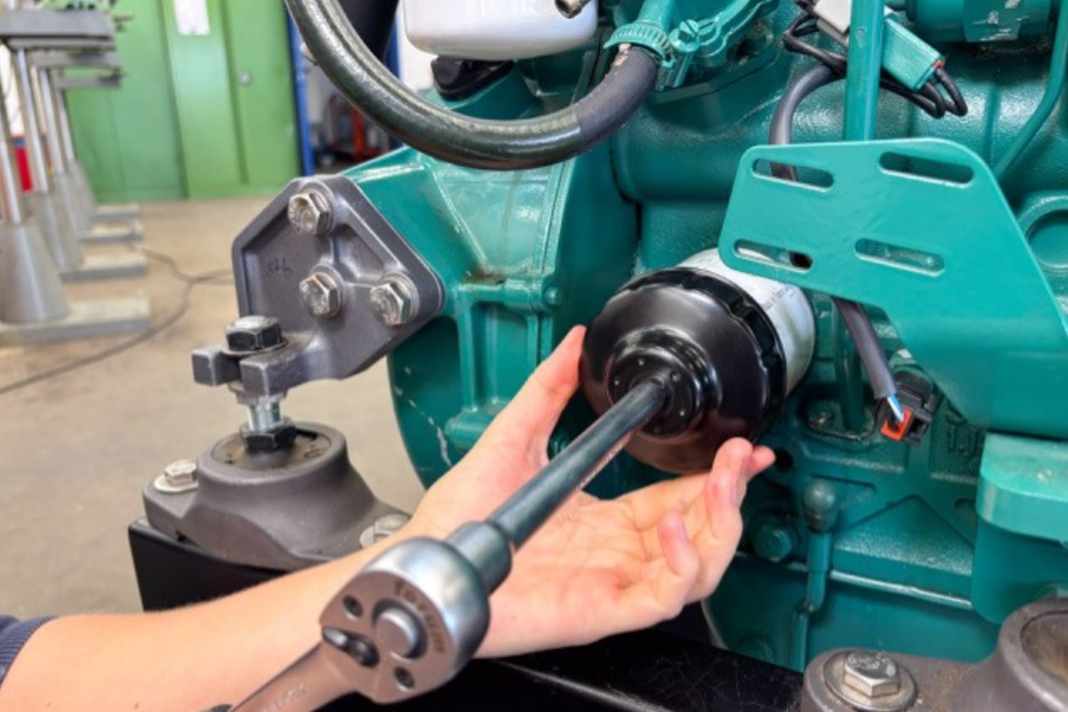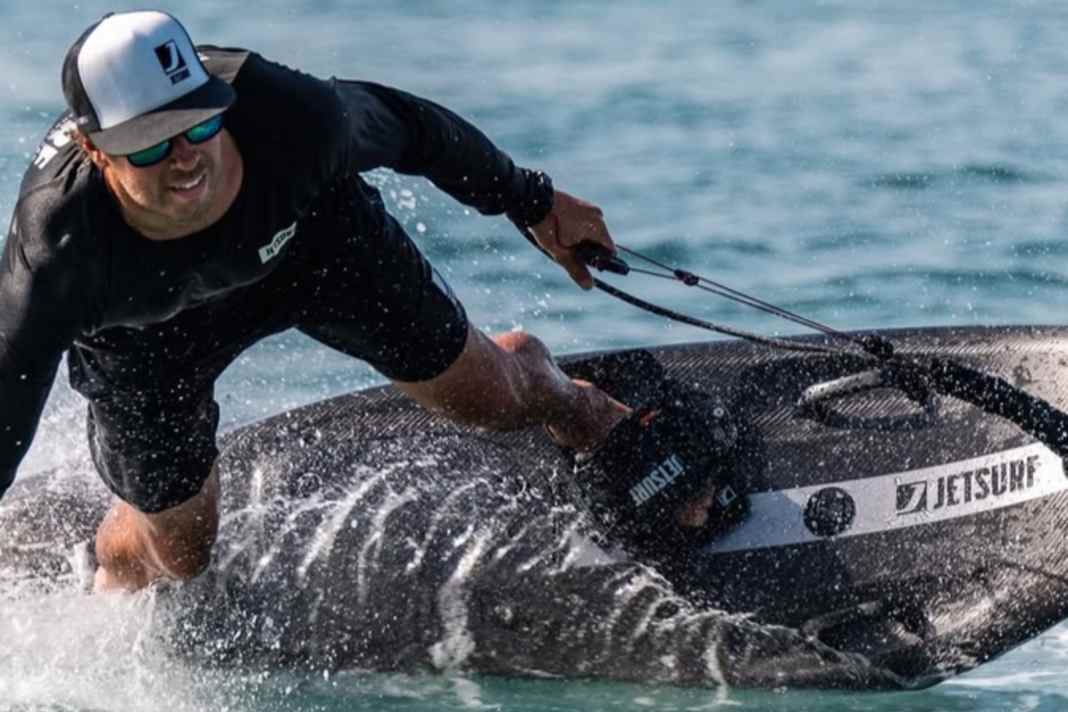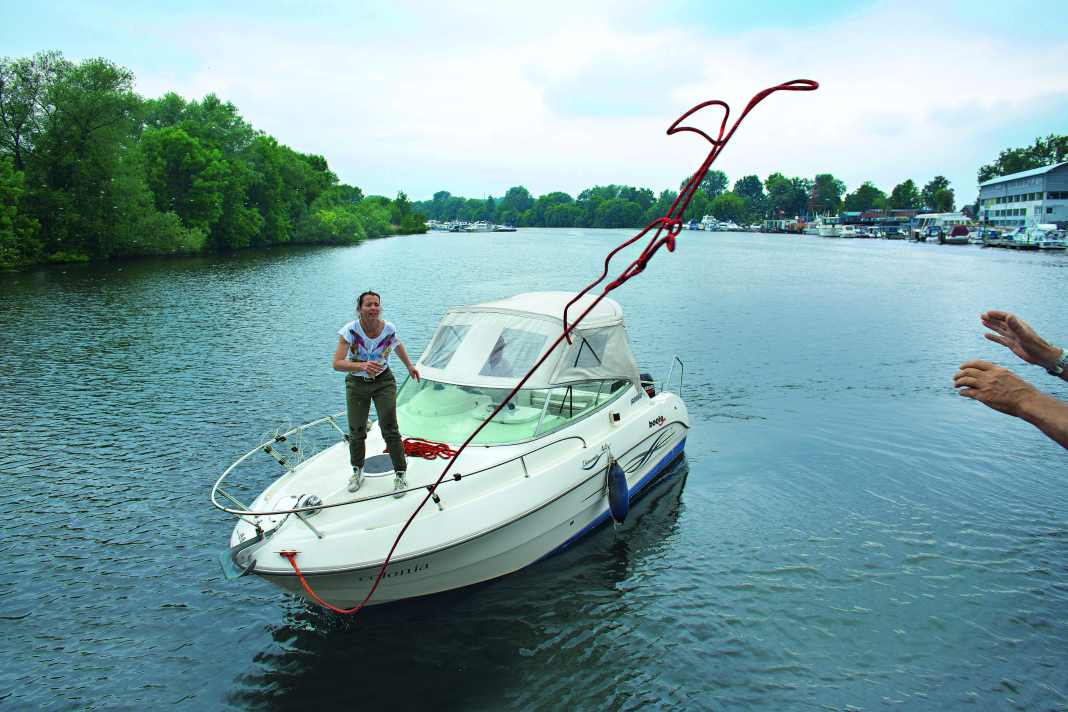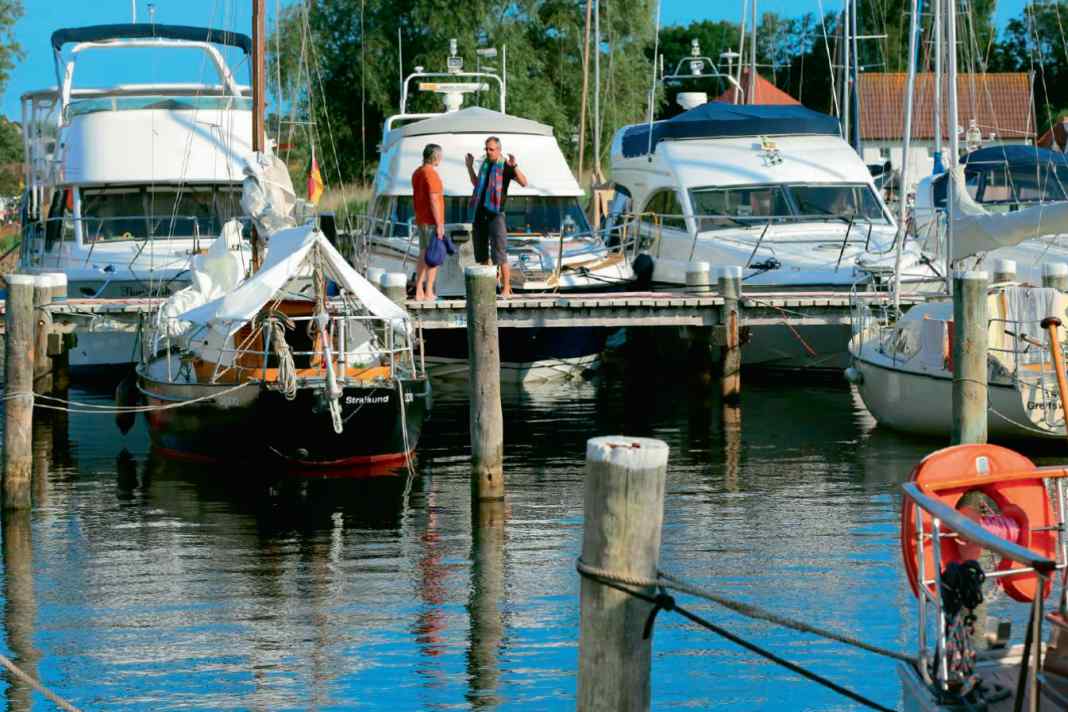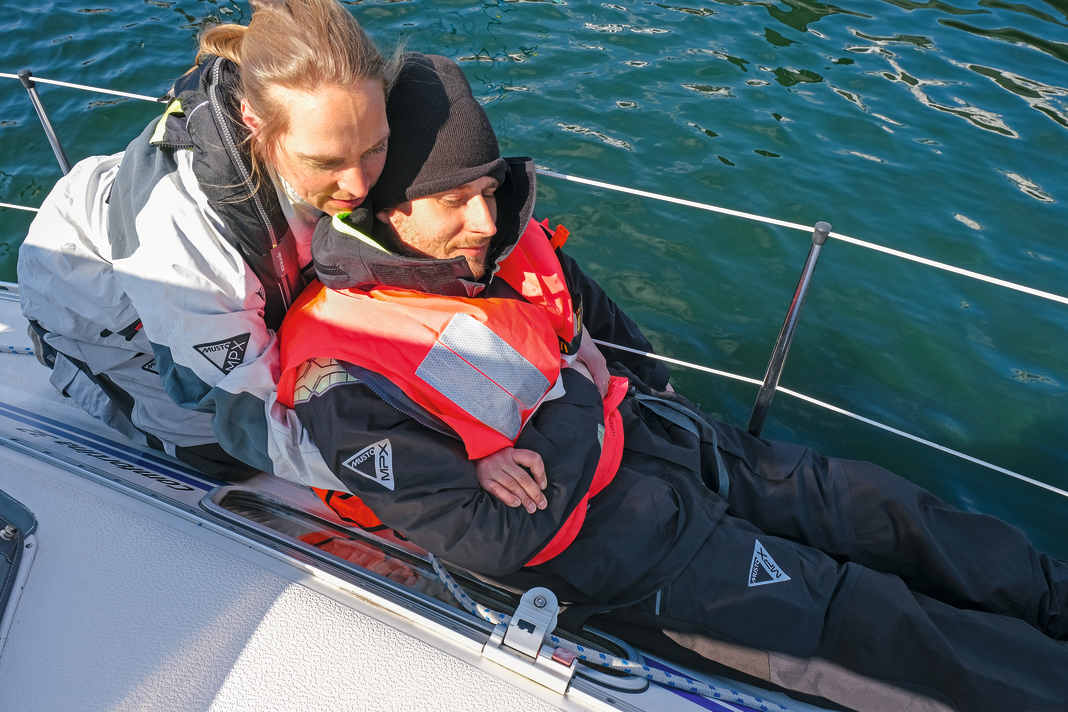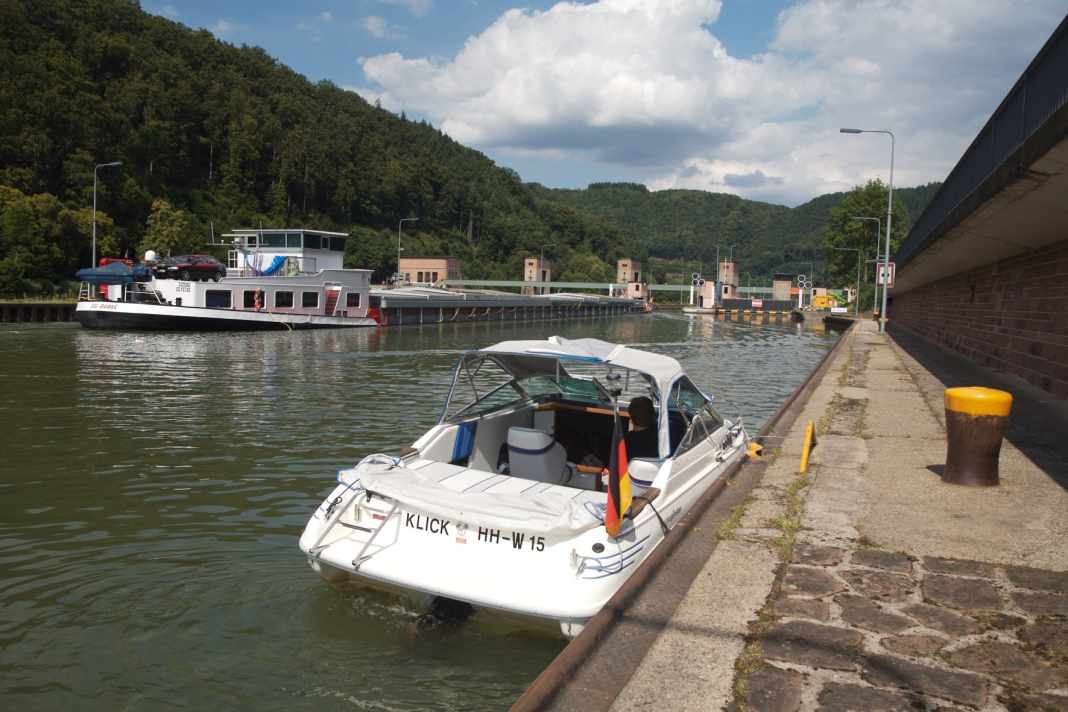Beginner's knowledge for motorboat drivers
All beginnings are difficult. Those who are not born into the sport of motor boating will find themselves confronted with many uncertainties at the beginning: Do I need a driving licence? Which boat should I buy? How do I transport it and where should I moor it? Is the area on my doorstep even suitable for beginners? What should I bear in mind when mooring and casting off? What are the advantages and disadvantages of the various drive systems? Can I carry out care and maintenance work myself without any technical knowledge? What safety equipment do I need to take with me? Questions upon questions - if you don't have any family members or friends who have more experience with motorboats, you need to read up on the subject - or find a club, association or other group.
BOOTE answers many of the questions that newcomers are confronted with and sheds light on the jungle of uncertainties. Becoming a skipper and boat owner is not as much of a witchcraft as it may seem at first. There is a solution to every problem and ultimately you will be able to concentrate on what it's all about: having fun on the water!
Boat types for beginners
Not all motorboats are the same - you will quickly realise this when you start browsing the pages of boat exchanges or dealers. From inflatable boats to luxury yachts, there is everything you can imagine. As a newcomer, you don't always immediately understand what is meant by the designations for boat types. So what is the difference between a day cruiser and a cabin cruiser? Are there models that are particularly suitable for beginners?
Of course, like all other boat buyers, beginners should make their choice of boat type dependent on the intended use and budget. The difference is that not every purpose is suitable for beginners. And therefore not every type of boat. A large, ocean-going yacht is probably a little too ambitious for a beginner. After all, anyone with little or no experience should first practise in more sheltered waters before heading out to sea.
Too much power can also be a risk for inexperienced skippers. The more powerful and faster a boat is, the more likely accidents are to happen. So before you give yourself an adrenaline rush with high-speed experiences, you should first familiarise yourself with the boat's handling characteristics and your own abilities.
The greatest difficulty when sailing is usually in the mooring and casting off manoeuvres. This is why most collisions happen in harbours and marinas. A small, manoeuvrable boat is easier to steer than a large yacht. You should be familiar with the peculiarities of the drive and rudder before heading for busy harbours. However, the behaviour of boats at speed also varies and you should not make manoeuvres at full throttle straight away, but slowly approach higher speeds.
Boats with an outboard motor are generally easier to steer than boats with an inboard motor. Electric boats are particularly user-friendly as they are often equipped with continuously variable gears and have no idle speed. They are therefore ideal for beginners. Many lakes offer low-powered electric boats without a licence, which you can test drive without much effort. Houseboats, which are currently experiencing a resurgence, are also often equipped with electric motors and have so little power that they can be driven without a recreational boating licence.
The power limit of 10.2 kilowatts or 15 hp also applies to boats with combustion engines - these can also be driven up to this limit without a licence.
Basics: What you should know as a beginner
However, no driving licence does not mean no knowledge. You should always have a basic knowledge of traffic regulations, navigation, safety, light guidance and weather. When chartering a yacht, you will be given detailed instructions and then receive a so-called charter licence, which is a prerequisite for using charter boats without a licence in some sailing areas. If you are travelling with your own boat, you should familiarise yourself with the equipment on board (safety, technology) before setting off and check that everything is complete and in working order.
Checklists can help you to check whether you have everything you need. In the area of safety, there are various equipment recommendations depending on the sailing area and boat size or number of crew members. But to-do lists can also help beginners not to forget anything in the areas of organisation (route planning, requesting moorings, etc.), luggage and engine maintenance.
Not only complete and intact equipment, but also the safe handling of it is crucial for a relaxed tour. You should know the general traffic rules for waterways as well as information specific to the area.
Even if it is possible to steer low-powered boats without a licence, it is safer to sail with a recreational boating licence (SBF). Depending on whether you are travelling by motorboat on inland waters or at sea, the contents of the SBF inland or sea are relevant. The practical part of the SBF course involves practising mooring manoeuvres. Having a recreational boating licence is therefore a good basis for getting into motor boating. While you would otherwise have to painstakingly acquire knowledge and skills yourself, you learn everything that is relevant in this way. At the latest when you are no longer content with the low motorisation of 15 hp, you will have to go back to school anyway. It's more relaxed if you go out on the water from the start with all the knowledge you don't want to miss, especially in tricky situations.
Models for beginners: which are best suited?
It's obvious that a beginner's boat shouldn't be too big, too fast or too expensive. But which model actually fulfils these requirements? Are there any boats that are particularly popular with beginners?
Smaller, open models are available as well as the somewhat larger cabin cruisers If you don't just want to go on day trips with your boat, but also the odd short trip, you can spend the night on a weekender.
Inflatable boats are also popular with beginners. The advantages are obvious: they are not too much of an investment, are easy to transport from one body of water to another and do not necessarily suffer damage in the event of a collision. The so-called RIB, i.e. the rigid inflatable boat, can represent a middle ground between an inflatable boat and a normal motorboat. Although it is not quite as inexpensive as a simple inflatable boat, it is still quite favourable compared to other types of boat.
Basic equipment: What do you need as a beginner, what is too much?
Once you have decided on the type of boat you want, it's time to get down to the finer details: What equipment do you want and, above all, what equipment do you need? With new boats, you often have configuration options in terms of equipment. Especially as a newcomer, you shouldn't have more technical equipment installed than necessary - you'll already have enough to do dealing with the basics. Used boats already have equipment and it is important to check whether this is complete, intact and fit for purpose.
On-board electrics: an overview for beginners
It is no longer possible to imagine blue water cruising without navigation aids, but GPS devices, chart plotters, radar, AIS (Automatic Identification System) and autopilots also help with navigation on inland and coastal waters. What you equip your boat with will probably depend primarily on the area, but also on your budget. Wherever a mobile phone network is available, apps can also be used as aids for navigation, route planning and weather forecasts. Despite all the digitalisation in navigation, paper charts of the sailing area should always be on board at sea.
The electronics on board may also include communication equipment such as radios or satellite telephones.
The cockpit and control station are of course also equipped with simple control displays, which can be used to conveniently and centrally monitor tank levels, speed, engine speed, remaining battery or machine values, for example.
Other electrical appliances are used for entertainment or everyday living. Boats with cabins often have multimedia equipment, a galley with corresponding kitchen appliances, a cool box, etc.
Beginners are unlikely to set off on a boat trip lasting several weeks - the technical equipment required will therefore be limited. The basic equipment does not include a satellite phone or a chart plotter. There is also no need to splash out on multimedia entertainment if you are only going on day trips.
Safety equipment: What must be on board?
No compromises should be made when it comes to safety. Even in sheltered waters, at least a minimum level of equipment should be on board. You can use the checklist from the Federal Ministry of Transport and Digital Infrastructure as a guide. Life jackets for everyone, fire extinguishers, a steering compass, distress signalling equipment and an echo sounder are just a few of the recommendations made there. The more unprotected the sailing area, the more extensive the safety equipment should be.
What is the perfect beginner's area?
Where is the best place for beginners to start practising? The best place is where there is as little current, commercial shipping, locks, tidal range, strong winds and swell as possible. In Germany, the inland waterways in Mecklenburg-Western Pomerania and Brandenburg offer perfect conditions for beginners. Thanks to numerous charter bases, the Mecklenburg Lake District also offers the opportunity to familiarise yourself with different types of boats.
Similarly calm, easy-to-navigate inland waters can also be found in France and the Netherlands - and you don't necessarily need your own boat there either, as there are also plenty of boat hire companies. Charter boats are licence-free there as well as in Mecklenburg and Brandenburg (but you must have a charter licence with you). However, if you want to take your own boat out on the water, you must have an inland navigation licence.
A little more skill is required in coastal waters. After all, you no longer just have to sail, you also have to navigate. This is no longer too difficult these days, but as a complete beginner, simply operating and steering the boat still requires a lot of attention - so an additional task can cause stress. Ideally, you should first gain experience on inland waterways.
When you go out to sea for the first time, it is best to go where the weather is fine, there is little swell and little wind. Waters with strong differences between high and low tide should be avoided. In Germany, the Baltic Sea is a good choice. The sea is particularly calm in the Bay of Lübeck, for example. The North Sea, on the other hand, is not recommended as it is difficult to navigate with strong tides, currents, rough weather and sometimes a lot of traffic from commercial shipping.
The Croatian Adriatic is a true Eldorado for motorboat enthusiasts. Not only does it offer good weather and light winds, but also the perfect infrastructure in the marinas. More and more harbours are being developed to make them suitable for pleasure craft and there are numerous moorings available along the entire coast.
Similarly dreamlike conditions can be found on the west coast of Greece. Although the infrastructure on the Ionian Sea cannot quite keep up with that of Croatia, the harbours and towns on the coast offer even more authenticity.
Of course, not every skipper is flexible enough to plan their first trips in the perfect areas for beginners. So if you need to master areas with one or two difficulties right from the start, you can ensure greater safety by taking an experienced companion with you, for example.
Type and power of the drive: What is suitable for getting started?
Beginners should also acquire some basic knowledge of Boat engines and drive systems. Which motor is best suited to your own needs? And which tasks are involved in which drive system? What can or must you do yourself, and what should be delegated to professionals?
Outboard motor
A basic distinction is made between outboards and inboards. Outboards are mounted at the stern of the boat, i.e. they are completely outside the boat. They offer the great advantage that all their parts are easily accessible, which makes them very maintenance-friendly. When it comes to combustion engines, outboards are easier to handle than inboards. They also act as a rudder, offer good manoeuvrability and are easy to maintain and winterise.
Inboard
As the name suggests, inboards are placed inside the boat. Only the propeller leads to the outside to propel the boat. Inboards are often more efficient than outboards as they usually run on diesel. Above a certain size, only inboards can be considered as a type of propulsion.
In addition to the classic inboard and outboard motors, there are also mixed forms such as the Z-drive.
Electric drives
Electric drive systems are also playing an increasingly important role. They can be used instead of combustion engines - both as inboard and outboard motors. They are almost maintenance-free, easy to operate and therefore ideally suited as a type of drive for beginners.
Engine power
The minimum power the engine should have can be calculated from the length and weight of the boat. However, external conditions such as current, wind and swell also play a role. Many sports boats are motorised beyond the minimum required - for example, gliders, whose bow should lift out of the water at a certain speed.
Beginners who want to sail without a licence are limited to boats with a maximum power of 15 hp anyway. However, less engine power does not necessarily mean that the boat is safer and more suitable for beginners. With an underpowered boat, it is not only difficult to make progress when the wind and waves start to pick up, but you will also quickly become unable to manoeuvre - which can be a serious danger. So if you really want to do without a recreational boating licence, you should also be aware that it is very limited in terms of boat size. This is because 15 hp is only sufficient motorisation for smaller boats.
But too much power is also not appropriate for newcomers' first trips. Powerboats with a high horsepower rating are not vehicles for beginners and accidents are inevitable if skippers without experience get into boats with several hundred horsepower.
If you decide in favour of an electric motor, you don't just have to think about the motor power, but also about the desired range. Depending on how far you want to travel with the boat, the drive battery needs to be larger or smaller.
Always a hand's breadth of water under the keel: with good preparation, consideration and caution
Of course, every beginner has to make their own experiences to some extent. But there are also experiences that you can do without - learning by doing is not always the best way.
If you prepare well and follow a few rules, even beginners have the best chance of having a relaxed time on the water.
For example, the following points should be prepared:
- Check the weather forecast
- Pack clothes for the appropriate weather and sun protection if necessary
- Pack enough food and drinking water
- Check safety equipment for completeness and integrity
- Check electrical devices for proper functioning
- Engine check (visual inspection, oil level, test run, etc.)
- Familiarise yourself with the traffic regulations and special features of the area
- Discuss responsibilities and rules for behaviour on board in advance
- Obtain information about the harbours to be visited
- Leave information about the planned trip with contact persons ashore
Thorough preparation pays off on the water, because it's usually not possible to turn back and make up for lost time. However, even the best preparation is useless if certain rules are not observed on the water. Consideration for commercial vessels is the top priority for leisure craft - and it is primarily for your own safety, as pleasure craft always lose out in collisions with the steel giants. As a beginner, you should generally be careful when travelling and not overestimate your abilities. If you also have the necessary knowledge on board, then nothing stands in the way of a successful boat trip.
The dream of owning your own boat: what you should consider when buying
While you don't have to take care of many things yourself when chartering a boat, there are other aspects that need to be considered when buying your own boat:
- The transport of the boat to the home area must be organised - this usually requires a trailer. However, the first prerequisite is that the boat can be trailered at all. This is the case up to a maximum boat length of 8 metres.
- With the topic insurance should be considered before you buy - at least liability insurance should be taken out in any case.
- You should also think about berths and winter storage in advance - as well as the other factors that make up the annual operating costs.
- Before making appointments to view used boats, you should make a checklist that you can use as a guide when inspecting the boat. Don't do without a test drive! If you have little experience with motorboats at the time of purchase, you should be accompanied by a more experienced skipper. The used boat should always be CE labelled.
Chartering is definitely a good introduction to the world of boats. Buying a boat is always a major investment. It therefore makes sense to try out your own preferences and skills on charter boats first.
Every beginning is difficult?
BOOTE makes it easier for beginners to get started - so that you can concentrate on the essentials as quickly as possible, namely having fun on the water. Guide articles provide Basic knowledge , checklists and tips for newcomers to the world of boating. Once all the questions have been answered and the operation of the engine, rudder and navigation systems are routine, it's time to get going: Let the wind blow through your hair, have a good chat and plan your next adventure.
